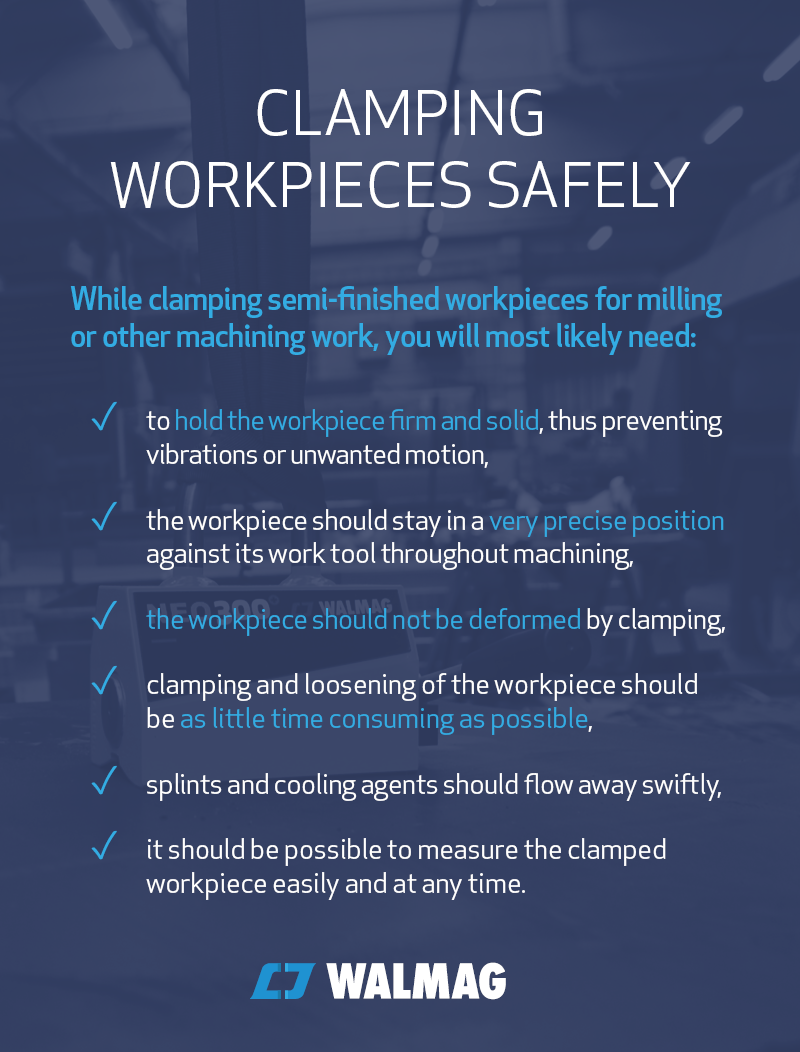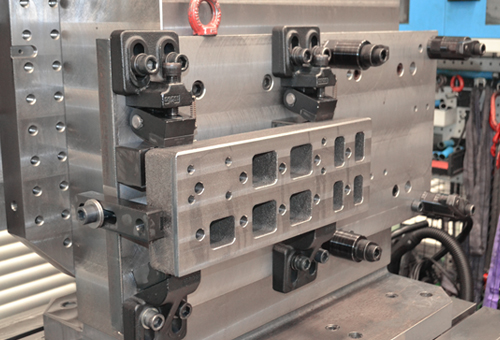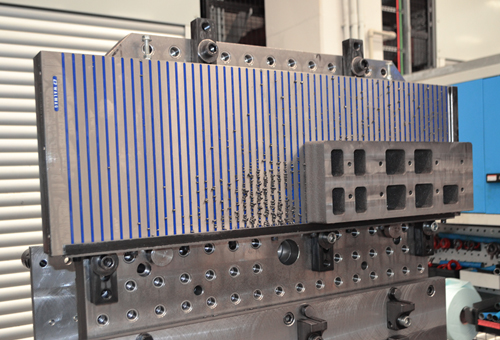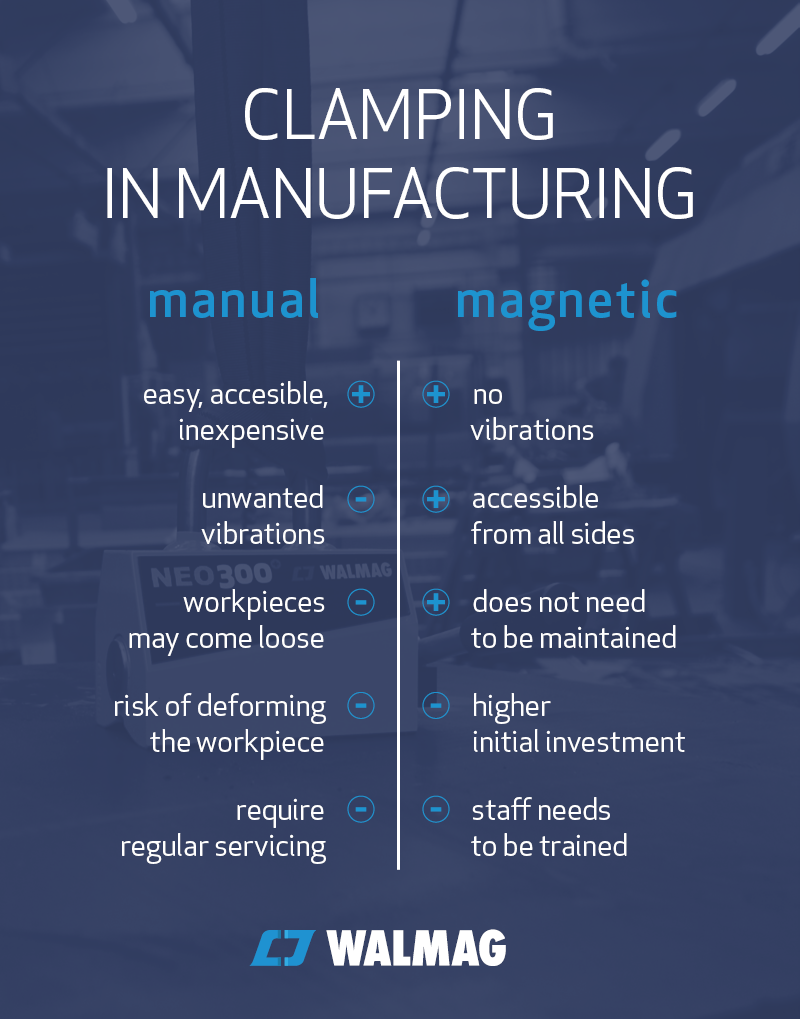
During milling or other machining work, a workpiece needs to be clamped quickly and also precisely. Commonly used manual clamping is a relatively cheap and easy solution with significant holding power. On the other hand, magnetic clamping can be quicker, can prevent unwanted vibrations and there’s no risk of deforming the workpiece. How to decide between the two?
Clamping workpieces safely
While clamping semi-finished workpieces for milling or other machining work, you will most likely need:
- to hold the workpiece firmly, thus preventing vibrations or unwanted motion,
- the workpiece should stay in a very precise position against its work tool throughout machining,
- the workpiece should not be deformed by clamping,
- clamping and loosening of the workpiece should be as little time consuming as possible,
- splints and cooling agents should flow away swiftly,
- it should be possible to measure the clamped workpiece easily and at any time.

Manual clamping on a vertical workstation.
Manual Clamping: Pros and Cons
Many production operations still use traditional manual clamps with workers installing the workpiece in the clamp by hand. Manual clamps are ubiquitous tools that can be found in everyone’s garage; these represent an effective clamping method that is easy, inexpensive and accessible to everyone.
Nevertheless, manual clamping has its cons. The workpiece to be machined is never clamped with the same force all around its perimeter and that can cause unwanted vibrations (occurring further from the jaws of the clamp and especially when machining asymmetrical workpieces). Manually clamped workpieces may move or even come loose—that means having to clamp the workpiece repeatedly, if you are lucky. If not, the workpiece may be irretrievably damaged. Finally, manual clamping is quite time consuming.
Manual clamping carries a risk of deforming the workpiece, if clamped too tightly. Due to the jaws of the clamp, the workpiece is never freely accessible from all sides, which may result in having to re-clamp it during machining. That takes time—and time is money. Manual clamps also require regular servicing and maintenance (tightening and oiling).

Magnetic chuck on a vertical workstation.
Magnetic Clamping: Pros and Cons
Clamping a workpiece with a magnetic chuck eliminates most cons of manual clamping. The workpiece is attached to the workstation using the same clamping force all around, there are absolutely no vibrations and there’s no risk of the workpiece moving or coming loose on condition proper clamping procedure is maintained.
A magnetically clamped workpiece cannot be deformed and is easily accessible from all sides. With proper training, using a magnetic chuck is much quicker than clamping a workpiece manually. Moreover, a magnetic chuck does not need to be maintained—there are no movable parts or screws that would require regular care.
However, magnetic chucks do require a higher initial investment, your staff needs to be trained to work with them and they cannot be used to clamp non-magnetic material (e.g., aluminium).

Which type of clamping? The payoff
Every manufacturer needs to do their math first and calculate the most financially savvy solution for them. From our experience, magnetic chucks bring the most benefits to factories that machine more complicated workpieces—clamping such workpieces manually would mean wasting precious time. Manual clamping, on the other hand, is necessary when working with non-magnetic materials like aluminium.
In case you still use manual clamps in your factory and are interested in trying out magnetic chucks, do let us know! We will gladly advise you while you make your choice. We even offer free trials of magnetic chucks for a few days so that you can test their pros and cons in practice.